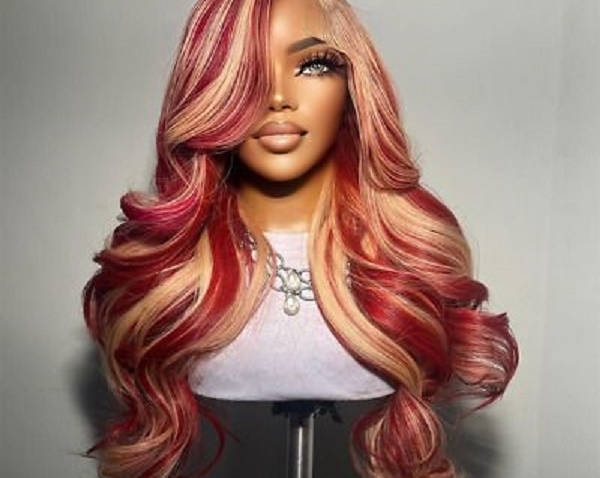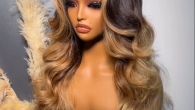
How Often Should You Wash Human Hair Wigs?
Human hair wigs offer a luxurious and natural look, but maintaining them can be a bit of a puzzle. One common question among wig enthusiasts is: how often should you wash human hair wigs? In this comprehensive guide, we’ll dive into the best practices for washing your human hair wig, ensuring it remains in top condition while looking and feeling fabulous.
Understanding Your Human Hair Wig
Human hair wigs are a significant investment, and their upkeep is crucial to preserving their appearance and longevity. Unlike synthetic wigs, human hair wigs require a bit more attention due to their natural texture and the fact that they can become dirty and tangled with regular wear.
The Importance of Proper Wig Maintenance
Proper maintenance not only keeps your wig looking great but also extends its life. Washing your wig too frequently or not frequently enough can both lead to problems. To strike the right balance, it’s essential to understand your wig’s needs based on factors like wear frequency, environment, and hair type.
How Often Should You Wash Human Hair Wigs?
The frequency of washing your human hair wig depends on several factors. Here’s a breakdown to help you determine the ideal washing schedule:

1. Wear Frequency
If you wear your wig daily, it will accumulate more oils, sweat, and environmental pollutants compared to a wig worn occasionally. In this case, washing every 6-8 wears is a good rule of thumb. For wigs worn less frequently, you might wash them every 10-12 wears.
2. Environment
If you’re exposed to pollutants, dust, or excessive humidity, your wig may need more frequent washing. In such environments, consider washing every 4-6 wears to keep it fresh and clean.
3. Hair Type and Style
Straight and wavy wigs tend to show signs of oil and dirt more quickly than curly wigs. Curly wigs can often go longer between washes. For a straight or wavy wig, every 6-8 wears is usually sufficient, while curly wigs can be washed less frequently, around every 8-10 wears.
4. Product Build-Up
If you use styling products on your wig, such as hairspray or gel, these can build up and require more frequent washing. Look for signs of product build-up and adjust your washing routine accordingly. In general, washing every 5-7 wears can help keep product build-up at bay.
How to Wash Your Human Hair Wig
Washing a human hair wig properly ensures it remains in great condition. Follow these steps for a thorough and effective clean:
1. Detangle First
Before washing, gently detangle your wig using a wide-tooth comb or your fingers. Start from the tips and work your way up to the roots to avoid breakage.
2. Use the Right Shampoo
Choose a mild, sulfate-free shampoo specifically designed for human hair wigs. Avoid using regular hair shampoo as it can be too harsh and strip the wig of its natural oils.
3. Lukewarm Water Rinse
Fill a basin with lukewarm water and add a small amount of shampoo. Gently submerge the wig and let it soak for a few minutes. Avoid vigorous rubbing or twisting.
4. Gently Cleanse
After soaking, gently cleanse the wig by swishing it in the water. Do not rub or scrub, as this can cause tangling and damage. Rinse thoroughly with lukewarm water.
5. Condition
Apply a conditioner designed for human hair wigs. Focus on the mid-lengths and ends, avoiding the roots. Leave the conditioner on for a few minutes, then rinse with cool water.
6. Drying
Pat the wig gently with a towel to remove excess water. Avoid wringing or twisting. Place the wig on a wig stand or mannequin head to air dry. Avoid using a hairdryer or placing the wig in direct sunlight, as this can cause damage.
7. Final Touches
Once dry, gently brush or comb your wig to restore its style. Avoid excessive brushing, which can lead to breakage. Your wig should be soft, clean, and looking as good as new.
Common Mistakes to Avoid
To ensure your human hair wig remains in excellent condition, steer clear of these common mistakes:

1. Overwashing
Washing too frequently can strip the wig of its natural oils and lead to dryness and breakage. Stick to the recommended washing frequency based on your wear and environment.
2. Using Harsh Products
Avoid shampoos and conditioners with harsh chemicals or high alcohol content. These can damage the hair fibers and affect the wig’s appearance.
3. Skipping Conditioning
Conditioning is crucial for maintaining the softness and manageability of your wig. Never skip this step, as it helps prevent tangling and dryness.
4. Improper Drying
Avoid drying your wig with a hairdryer or exposing it to direct heat. Instead, let it air dry on a wig stand to maintain its shape and prevent heat damage.
Caring for Your Human Hair Wig Between Washes
In addition to regular washing, proper care between washes can help keep your wig looking its best. Here are some tips:
1. Avoid Excessive Heat
Protect your wig from excessive heat sources, such as hairdryers and straighteners, to prevent damage. If you need to style your wig, use heat styling tools sparingly and always on a low setting.
2. Store Properly
When not in use, store your wig on a wig stand or mannequin head to maintain its shape and prevent tangling. Avoid leaving it in direct sunlight or humid environments.
3. Use a Silk Pillowcase
If you wear your wig while sleeping, consider using a silk pillowcase to reduce friction and prevent tangling. Silk is gentler on hair fibers compared to cotton.
4. Regular Brushing
Gently brush your wig daily to prevent tangling and keep it looking smooth. Use a wide-tooth comb or a brush designed specifically for wigs.
Advanced Wig Care Tips
Beyond regular washing and conditioning, there are additional steps you can take to ensure the longevity and optimal appearance of your human hair wig.
1. Deep Conditioning Treatments
Periodically, give your wig a deep conditioning treatment to replenish moisture and enhance softness. Use a rich, hydrating conditioner or a specialized deep conditioning mask. Apply it once a month or as needed, depending on the condition of your wig.
2. Avoid Chlorine and Saltwater
When swimming, avoid wearing your wig in pools or the ocean, as chlorine and saltwater can cause significant damage. If your wig does get exposed, rinse it thoroughly with fresh water and follow up with a proper wash and conditioning routine.
3. Heat Styling Caution
Human hair wigs can be heat styled, but always use a heat protectant spray and choose lower heat settings to prevent damage. Avoid excessive heat exposure, which can lead to dryness and breakage.
4. Regular Trimming
Just like natural hair, human hair wigs benefit from regular trims. Schedule a trim every 6-8 weeks to maintain the shape and remove split ends, keeping your wig looking fresh and healthy.
5. Protective Styling
If you wear your wig frequently, consider using protective styles or accessories to minimize wear and tear. Silk or satin liners can reduce friction and prevent tangling, especially during sleep.
Troubleshooting Common Issues
Even with the best care, you may encounter some issues with your human hair wig. Here’s how to handle common problems:

1. Tangling
If your wig becomes tangled, gently detangle it using a wide-tooth comb or a wig brush. Start from the tips and work your way up, applying a leave-in conditioner or detangling spray if necessary.
2. Dryness
For wigs that feel dry or brittle, try using a deep conditioning treatment or leave-in conditioner. Ensure you’re not overwashing, as this can strip natural oils.
3. Shedding
Some shedding is normal, especially with frequent wear. If shedding seems excessive, check that you’re not pulling or combing too aggressively and consider a trim to manage split ends.
4. Color Fading
To maintain color vibrancy, protect your wig from excessive sun exposure and use color-safe shampoos and conditioners. Avoid over-washing to prevent premature color fading.
Conclusion
Maintaining your human hair wig involves more than just washing. By understanding your wig’s needs and following a proper care routine, you can ensure it remains in top condition, providing a natural and elegant look for longer. Remember to wash your wig based on wear frequency, environment, and product build-up, and always use the right products and techniques for washing and conditioning.












Leave a Reply